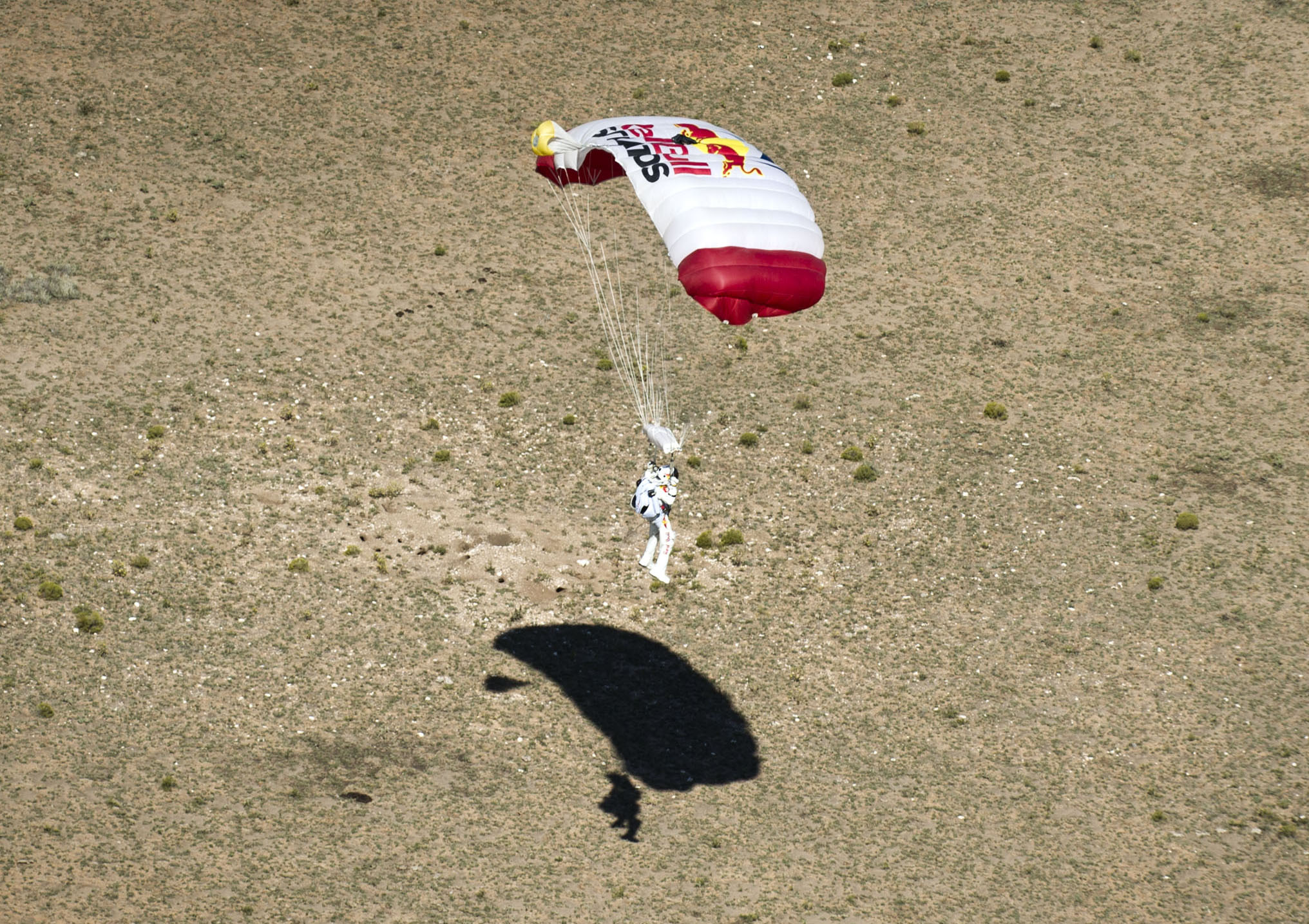Dunlap company made record-setting space jump parachute
Friday, January 1, 1904
 In this photo provided by Red Bull, pilot Felix Baumgartner of Austria lands in the desert after his successful jump on Sunday, Oct. 14, 2012 in Roswell, N.M. Baumgartner came down safely in the eastern New Mexico desert minutes about nine minutes after jumping from his capsule 128,097 feet, or roughly 24 miles, above Earth.
In this photo provided by Red Bull, pilot Felix Baumgartner of Austria lands in the desert after his successful jump on Sunday, Oct. 14, 2012 in Roswell, N.M. Baumgartner came down safely in the eastern New Mexico desert minutes about nine minutes after jumping from his capsule 128,097 feet, or roughly 24 miles, above Earth.When Felix Baumgartner leapt into the sky Sunday and began to plunge 24 miles to the floor of a New Mexico desert, George Galloway wasn't worried about the parachute.
The speed. The temperature. The unruly winds. That worried him.
But the chute would work. He knew it would.
Afterall, he had made it specially, crafted it on a computer screen in Dunlap, Tenn. His employees stitched the exotic fabrics together. They tested it 1,000 times for three years. They made the safety parachute, too.
The nylon fiber spun to make the fabric was made in Chattanooga, he said.
While "Fearless Felix" is getting the worldwide attention, he didn't land on his feet without help, Galloway said.
"It's the people of Dunlap and the people who work for Precision that are the heroes in this story," he said.
Galloway never met the daredevil who is now on record for the highest jump ever and breaking the sound barrier, but his company, Precision Aerodynamics, has made thousands of chutes for jumpers like Baumgartner.
To be exact, his 24-person team has put together 600,000 since 1980, when Precision was founded in Dunlap. Over the years, he has built a strong relationship with sponsor Red Bull. His parachutes fly stunters into NASCAR races and fly military special operations units from high altitude to specific targets.
At 62, he's lived most of his life with an obsession over skydiving and the contraptions that help jumpers land.
In 1972, he made his first jump and broke his leg when he got to the ground, which got him interested in making parachutes himself. Typically, the chutes used by jumpers at the time were discarded military equipment.
"They had already seen their best days," he said.
Sports parachutes weren't being manufactured, he said.
In the late '70s he developed his first parachute while working at a training school in Atlanta, and he hasn't stopped since.
On Monday, the mood in the office was upbeat, he said. Television crews were coming in and out. His phones rang all day. But for the most part, it was business as usual.
The Baumgartner parachute was high profile, but he said it was no more important than any other made.
If the parachutes don't work, there is a lot more than a record at stake.
Contact staff writer Joan Garrett at jgarrett@timesfreepress.com or 423-757-6601. Follow her on Twitter at @JoanGarrettCTFP.

